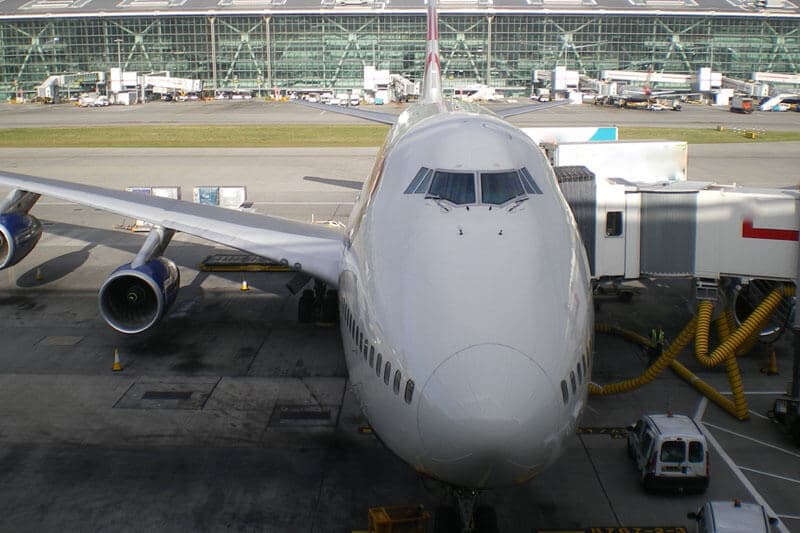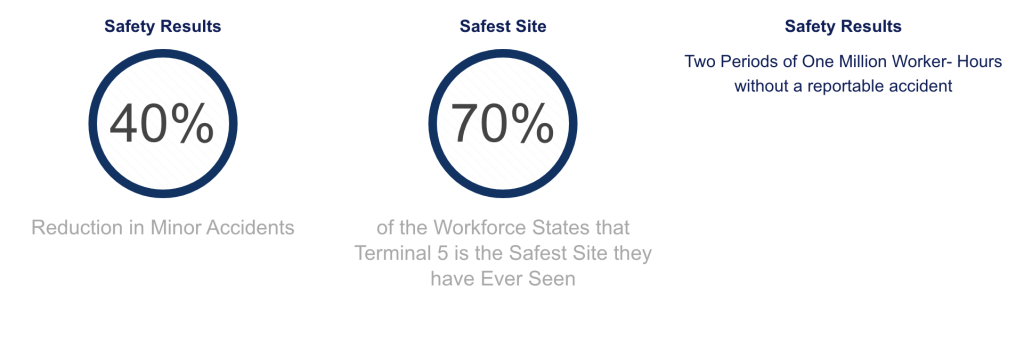British Airport Authority engages JMJ to create safety culture at Heathrow’s Terminal Five
JMJ was engaged to support the T5 Project Management Team (PMT) in implementing a full IIF safety program across the entire project, including all contractors



JMJ was engaged to support the T5 Project Management Team (PMT) in implementing a full IIF safety program across the entire project, including all contractors
Terminal Five (known as T5) is the newest passenger terminal at London’s Heathrow Airport. It is owned and operated by the British Airport Authority (BAA), the world’s leading airport company. Heathrow is the world’s busiest airport in terms of international passenger traffic and the third busiest in total passenger traffic.
During construction (2002 to 2012), T5 has been the largest and most complex construction project in Europe, with a budget in excess of £4 billion.
It has taken more than 37 million person-hours to conduct the T5 project to date, with a workforce peaking at 6,000 people and involving over 60,000 workers of all construction disciplines.
BAA is a highly safety-conscious company and recognized the potential for a project as large and diverse as T5 to expose many workers to major health and safety risks. Based upon industry norms, it was predicted that the project would suffer two fatalities and over 600 serious injuries. For BAA, that was unacceptable.

As a result, BAA implemented a comprehensive Safety Management System (SMS) before construction commenced, but by mid-2003, the T5 project was still experiencing a significant number of accidents. They recognized that an SMS on its own would not produce the breakthrough safety results they sought. They also needed a way to capture the hearts and minds of a diverse workforce (35 nationalities in all) and determined that the way to accomplish this was through the creation of a strong safety culture across the site—one that was accepted by all the contractors engaged there.
JMJ was engaged to support the T5 Project Management Team (PMT) in implementing a full IIF safety program across the entire project, including all contractors. This program was launched in January 2004 and was sustained by the project as it transitioned to final fit-out and finishing.
The IIF program for T5 created a collective vision for the future of safety on the project and the leadership required to enable that future, rather than focusing on traditional measures such as historical statistics or compliance. The IIF approach creates safety as a core value, not just one of a competing list of priorities.
Key components of JMJ’s safety program for T5 included:
JMJ conducted an initial assessment of the T5 workforce to ascertain the current culture and operating environment, as well as diagnose strengths to reinforce and gaps to fill en route to building an IIF safety culture. The assessment also was used to design a tailored culture-building approach for the T5 project.
JMJ then conducted commitment and alignment workshops with the project leadership team, focused on leadership coaching, and—importantly—taught IIF trainers who were able to cascade the safety commitment across the whole T5 project. Ultimately, everyone involved in the project was engaged in the IIF safety program.
The safety performance of the project has received significant industry and media attention, saying that “BAA and its partners have notched up a safety record that could set a new benchmark for the construction industry,” according to People Management magazine.
